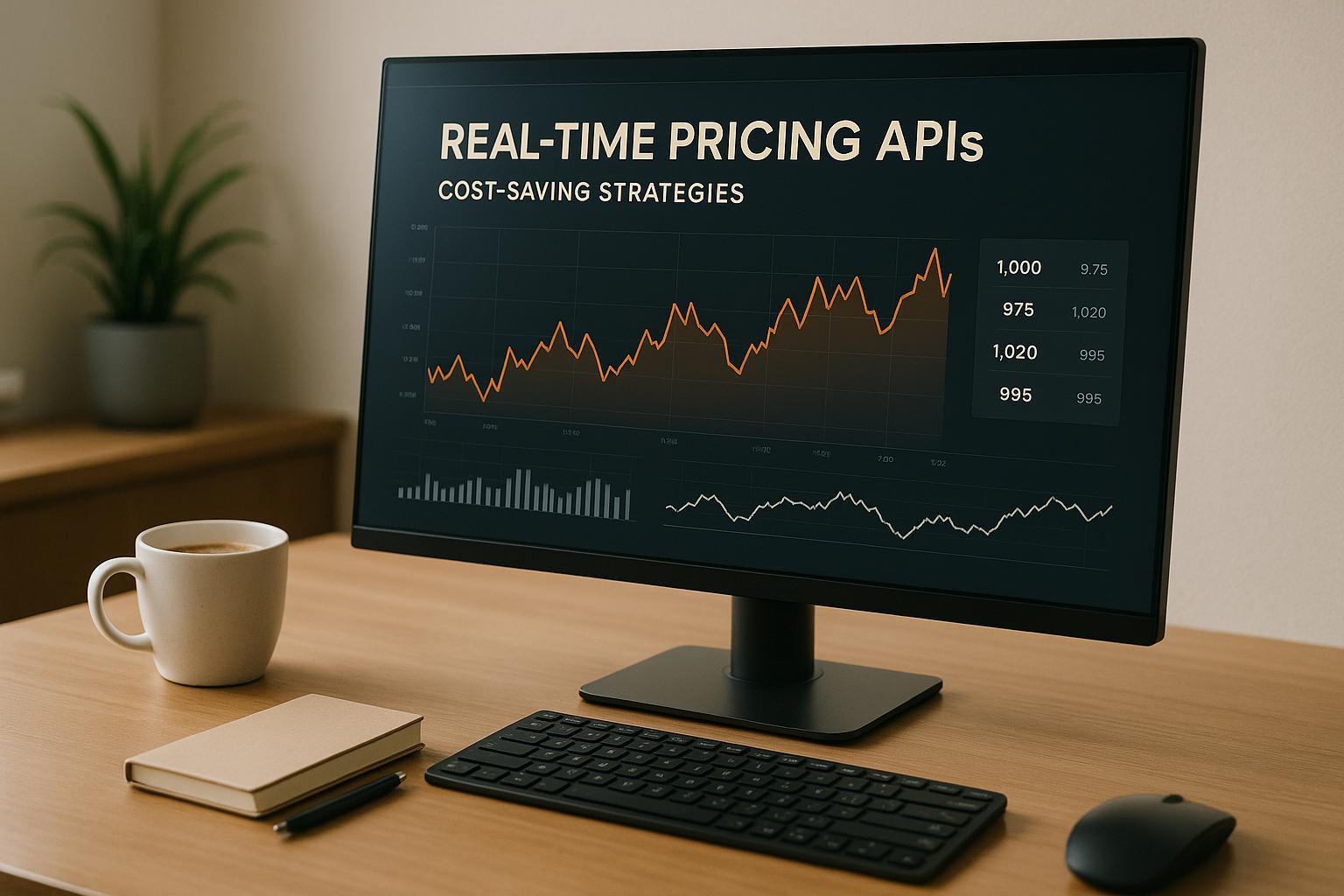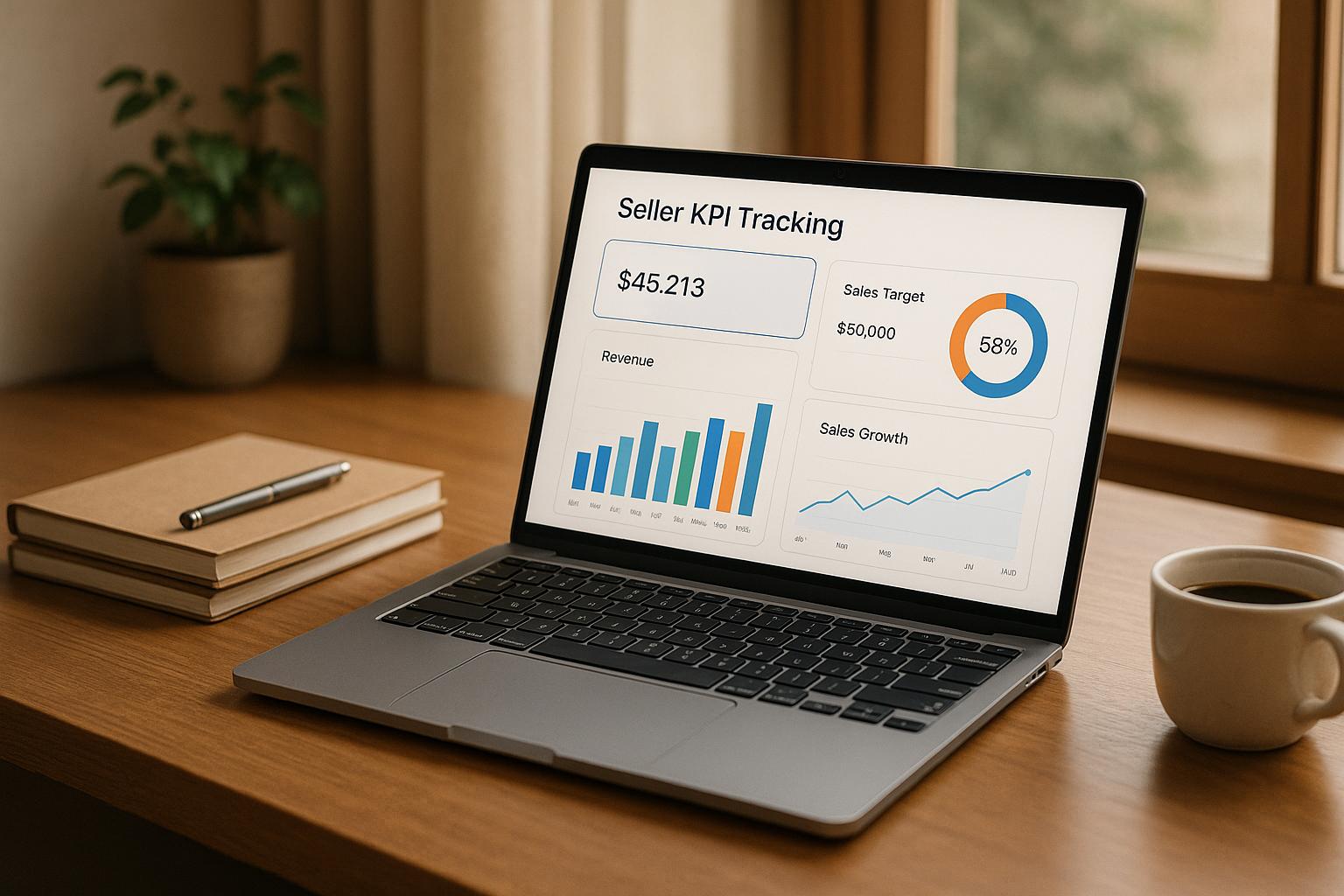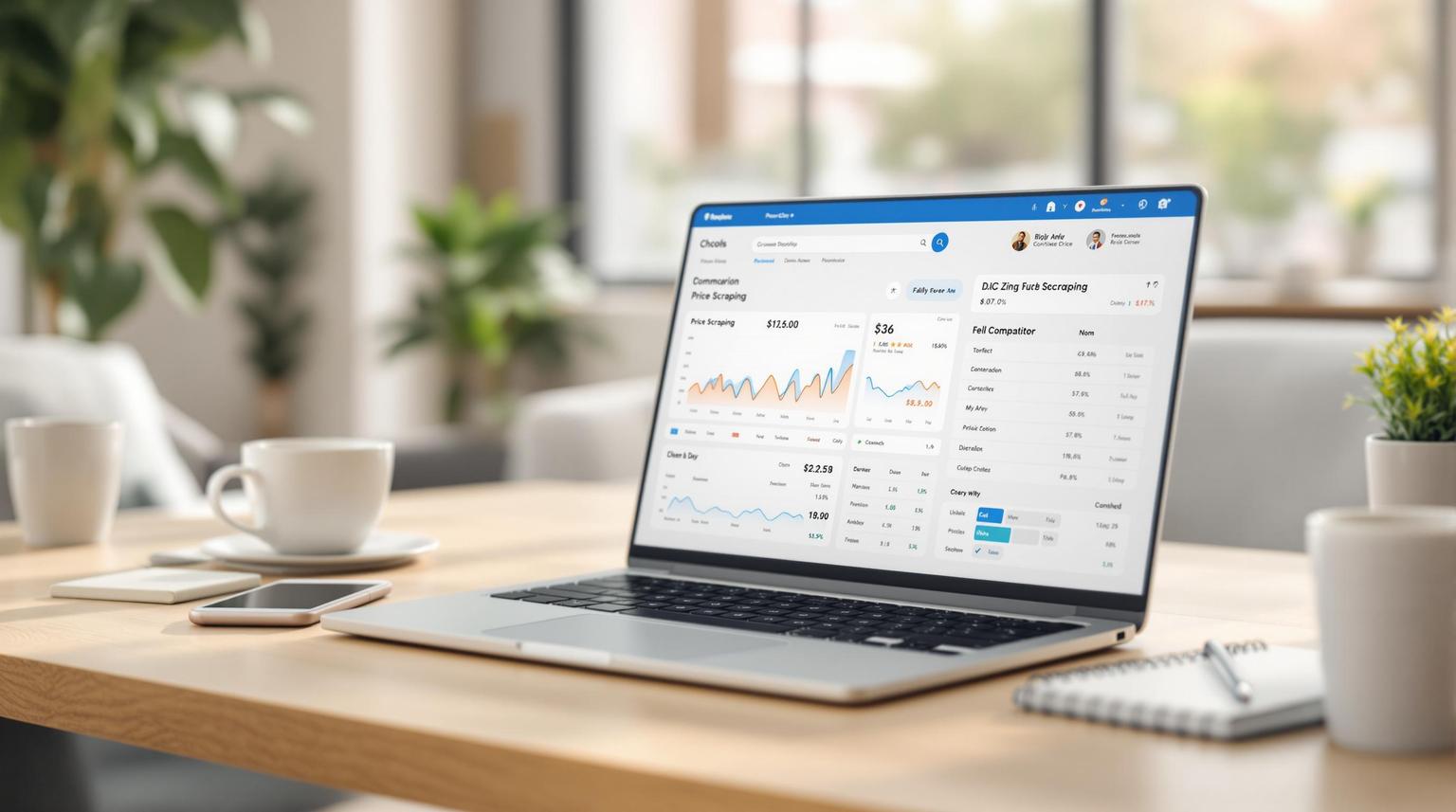Horizontal Scaling for Web Scraping APIs

April 7, 2025
Need to handle large-scale web scraping efficiently? Horizontal scaling is your answer. It spreads tasks across multiple servers, boosting performance, avoiding IP bans, and ensuring system stability. Here's how it works:
- Distribute Requests: Reduce load per server to bypass rate limits.
- Enhance Stability: Add redundancy to prevent downtime if a server fails.
- Boost Performance: Scale up or down based on demand for faster data collection.
Key Components:
- Load Balancing: Spread traffic evenly across servers using tools like HAProxy or NGINX.
- Proxy Management: Rotate proxies, monitor health, and use regional pools to avoid detection.
- Performance Monitoring: Track response times, error rates, and system uptime with tools like Prometheus.
Quick Setup Tips:
- Use multi-server scraping with cloud platforms (e.g., AWS Lambda).
- Implement multi-thread processing for concurrent requests.
- Optimize data storage with compression and automated cleanup.
Example: ShoppingScraper uses horizontal scaling to collect e-commerce data from 40+ countries, maintaining response times under 4 seconds.
This approach ensures reliable, scalable web scraping while managing high data loads effectively.
Main Elements of Horizontal Scaling
Building an effective horizontal scaling strategy for web scraping APIs depends on three core components.
Load Distribution
Load balancers play a key role in spreading requests across multiple servers, ensuring no single server gets overwhelmed. Here's how the system works:
- Server capacity tracking: Keeps tabs on performance to avoid overloading.
- Dynamic routing: Redirects traffic away from overloaded servers based on real-time conditions and the urgency of requests.
By balancing the load, you can prevent bottlenecks. If a server experiences delays or errors, the load balancer reduces its traffic until the issue is resolved.
Another critical aspect of the setup is ensuring the system is equipped with reliable backup and recovery mechanisms.
System Backup and Recovery
A strong backup and recovery plan includes:
- Redundant storage: Keeps multiple copies of data in different locations.
- Automated failover: Quickly detects server failures and redirects traffic to backup servers.
- Request retry logic: Handles failed requests intelligently, using techniques like exponential backoff to avoid overwhelming the system.
These measures help prevent data loss and ensure the system keeps running smoothly, even when things go wrong.
Once the load is balanced and backups are in place, monitoring performance becomes the next priority.
Performance Tracking
Continuous performance tracking is essential to keep scraping operations running efficiently. ShoppingScraper offers an example of how this can be done effectively:
- Response time monitoring: Tracks how quickly the system responds to requests.
- Error rate tracking: Logs and analyzes errors to identify and fix issues.
- System availability: Maintains a 99% uptime for critical services.
For instance, a recent optimization of ShoppingScraper's Google Shopping API led to a 25% boost in performance. Their monitoring strategy focuses on key metrics:
| Metric Type | What to Monitor | Why It Matters |
|---|---|---|
| Speed | Response times, request processing rates | Helps identify bottlenecks and improve efficiency |
| Reliability | Error rates, successful request percentage | Ensures stable operations and accurate data |
| Resource Usage | CPU load, memory usage, bandwidth | Prevents overload and keeps the system running smoothly |
This thorough monitoring approach not only keeps the system healthy but also uncovers areas for improvement.
Methods for API Scaling
To optimize API performance, focus on multi-server scraping, proxy management, and multi-thread processing. These techniques build on earlier principles to improve both scalability and efficiency.
Multi-Server Scraping
By spreading scraping tasks across multiple servers, you can handle more requests without overloading a single system. Cloud platforms make it easy to set up and scale these servers affordably. For instance, ShoppingScraper uses this setup to maintain API response times under 4 seconds, even during peak traffic.
Here are some ways to implement this:
- Use Docker for container orchestration
- Leverage AWS Lambda for serverless computing
- Place servers in strategic regions to cut down latency
The key is ensuring tasks are distributed properly and servers are well-coordinated.
Proxy Setup and Control
A good proxy system is critical for reliable scraping and avoiding rate limits. ShoppingScraper has shown how effective proxy management can support large-scale scraping operations.
Key considerations for proxy setups include:
- Automating proxy rotation
- Regularly checking proxy health and removing weak ones
- Distributing proxies across different regions
- Maintaining separate proxy pools for specific targets
Multi-Thread Processing
Using multi-threading allows your API to handle several requests at once, boosting efficiency. ShoppingScraper’s thread optimization has led to noticeable performance improvements.
Best practices for multi-threading include:
- Configuring thread pools based on system resources
- Implementing smart request queuing
- Dynamically adjusting thread allocation as needed
- Using asynchronous processing for tasks like I/O
These methods work together to handle growing data demands while keeping API responses consistent.
sbb-itb-65e392b
Software for API Scaling
Choosing the right software stack is essential for scaling web scraping APIs efficiently. These tools work hand-in-hand with load balancing and monitoring strategies to handle data effectively and ensure system reliability.
Web Scraping Tools
Selecting the right software is key to supporting horizontal scaling for web scraping APIs. ShoppingScraper's infrastructure is a great example of how the right tools can maintain consistent performance.
Here are some important components:
- Load Balancers: Tools like HAProxy and NGINX help distribute requests evenly.
- Queue Management Systems: RabbitMQ and Apache Kafka manage task queues efficiently.
- Monitoring Tools: Prometheus and Grafana provide real-time insights into system performance.
API Setup and Tracking
A well-structured API setup is crucial for smooth operation. Key aspects include:
- Error Tracking: Detailed error messages and status codes help with quick troubleshooting.
- Performance Monitoring: Track response times and measure uptime for better reliability.
- Request Analysis: Tools that analyze API usage patterns can help optimize performance.
In addition to managing APIs, how you store and clean data plays a big role in scalability.
Data Storage and Clean-up
Managing data efficiently is critical for maintaining API performance at scale. Some effective strategies include:
- Database Optimization: Use indexing and partitioning to speed up queries.
- Data Compression: Reduce storage needs with efficient compression algorithms.
- Automated Cleanup: Regularly remove outdated or duplicate entries to keep storage lean.
"ShoppingScraper has been a key asset for our agency. With the support of ShoppingScraper we are able to collect massive quantities of relevant data, which feeds our systems, and provides our specialists with data-driven insights that help them make better decisions about advertising, optimization, pricing and inventory management, leading to increased sales and profits." - Toon Hendrikx, Founder & CEO 10XCREW
Integration options include RESTful APIs, web apps for manual queries, and Google Sheets for spreadsheet workflows. Combining strong storage solutions with regular maintenance ensures your API performs consistently, even when managing large datasets.
ShoppingScraper Scaling Example

Scaling Features
ShoppingScraper's setup is built to handle massive e-commerce data demands efficiently. It uses horizontal scaling to support real-time data collection from various marketplaces, keeping response times under 4 seconds.
Key features include:
- Multi-Marketplace Support: Collects data simultaneously from Google Shopping in over 40 countries and other leading marketplaces.
- Automated Scheduling: A scheduler endpoint organizes tasks at regular intervals (hourly, daily, or weekly).
- Advanced Product Matching: Uses EAN/GTIN matching algorithms for precise product identification across different platforms.
These features provide the technical backbone for businesses to gather and use data effectively.
Real-World Application
ShoppingScraper's scaling capabilities shine in enterprise-level use cases. For example, VML Netherlands relies on the platform for detailed market analysis. Job van der Geest, Marketing Intelligence at VML Netherlands, shares:
"The data comes from Google Shopping, where we collect pricing data on an EAN-level. This means we capture every variant, color, and size - updated throughout the day."
Similarly, Nedis, a prominent distribution company, has integrated ShoppingScraper into its operations. Arjan Pelle, Manager Business Intelligence at Nedis, states:
"ShoppingScraper has become an integral part of our distribution strategy. The product and pricing data it provides allows us to make smart decisions about our inventory and pricing."
For businesses with heavy data needs, flexible request plans ensure smooth operations:
| Plan Tier | Monthly Requests | Additional Request Blocks | Cost per Block |
|---|---|---|---|
| Advanced | 150,000 | 10,000 requests | $29 |
| Enterprise | 500,000+ | 10,000 requests | $15 |
This structure helps businesses handle peak data loads while keeping costs under control.
Summary
Horizontal scaling is an effective way to handle large-scale web scraping. By combining distributed systems, proxy management, and performance monitoring, you can create a solid framework for scalable API operations. Together, these elements help ensure reliable and efficient performance.
Key Points
Building a successful horizontally scaled web scraping API involves several crucial components:
Load Management and Distribution
- Using a multi-server setup to distribute requests evenly and maintain response times.
- Employing task scheduling to balance workloads across resources.
- Applying matching algorithms to ensure data remains accurate.
System Performance
Modern systems achieve high uptime and faster speeds by leveraging:
- Real-time data collection across various marketplaces.
- Distributed processing for better scalability.
- Automated resource allocation to optimize performance.
These strategies form the backbone of scaling web scraping APIs effectively.
For the best scaling outcomes, focus on these core areas:
| Scaling Component | Key Benefit | Implementation Focus |
|---|---|---|
| Load Distribution | Prevents server overload | Deploy multiple servers |
| Proxy Management | Ensures consistent access | Use IP rotation strategies |
| Task Automation | Boosts efficiency | Schedule data collection |
| Error Handling | Preserves data quality | Monitor system status |
Related posts
























































